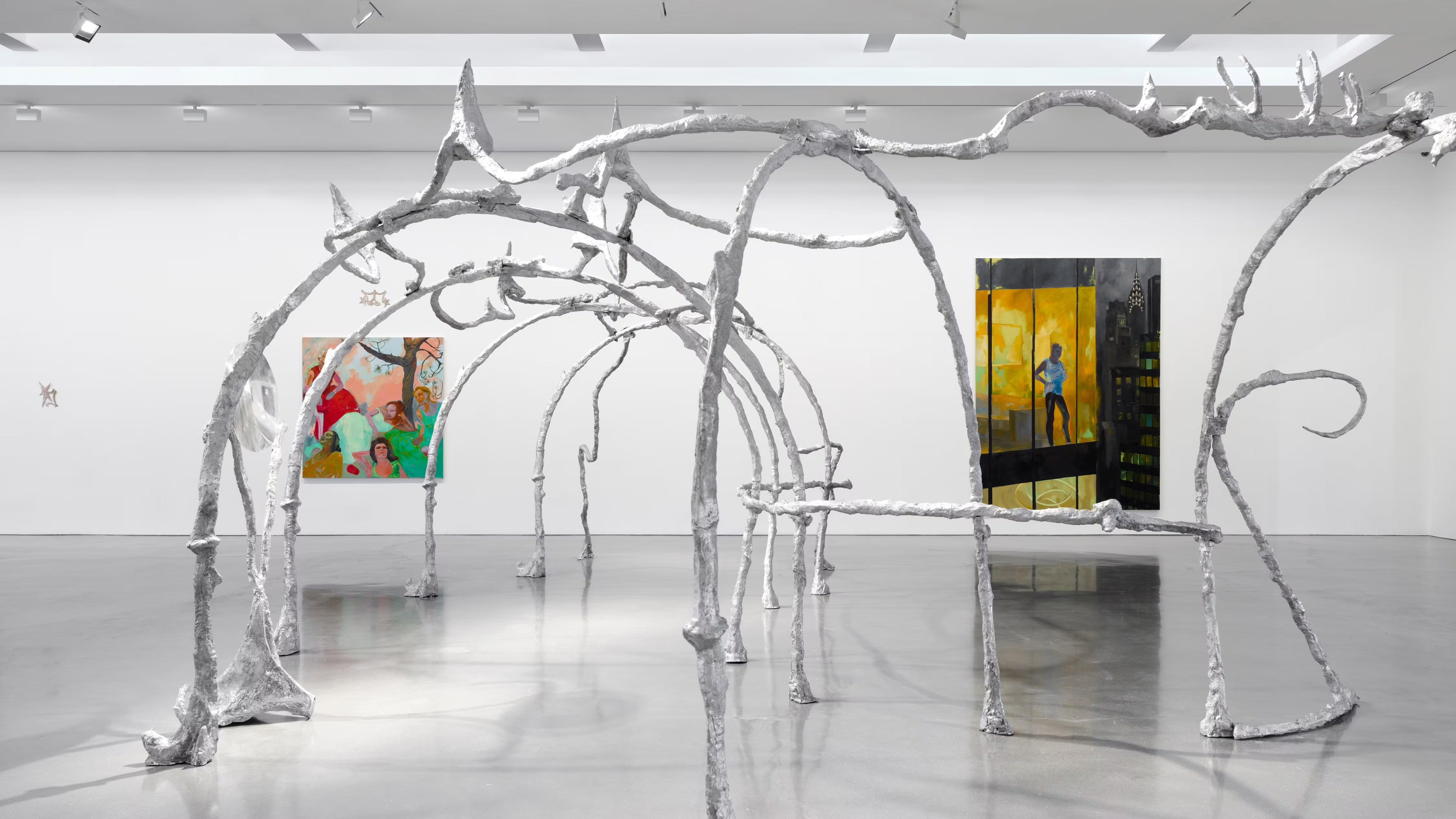
Bruce LaBruce has always stretched desire to its limit, treating it as something unruly, even feral. If Gus Van Sant lingers in the poetry of the queer outsider and George Kuchar revels in camp delirium, the underground filmmaker teeters on the edge of excess, collapsing with ecstasy at the altar of transgression. LaBruce exalts what mainstream culture discards and rejects everything it upholds.
His newest film, The Visitor (2024) takes this to its logical extreme. An interpretation of Pier Paolo Pasolini’s Teorema, LaBruce transposes the original 1968 film’s tale of erotic and spiritual upheaval onto a contemporary framework—one that deals with race, migration and colonial paranoia. In Pasolini’s version, an enigmatic visitor, played by a coal-eyed Terence Stamp, arrives unannounced at a wealthy Milanese household. One by one, he seduces the mother, the father, the son, the daughter, and the maid, dismantling their repressions before vanishing just as suddenly.

LaBruce keeps the bones but fractures the frame. His version opens with a suitcase on the banks of London’s Thames river; a hand springs up from inside and unzips it as a nearby homeless man listens to a conservative radio broadcast warning of “illegal aliens” entering the country. Out comes a naked Black man covered in sand. Played by burlesque performer Bishop Black, LaBruce’s Visitor arrives with no name or origin. Soon, identical suitcases appear across the city, each containing an identical Visitor. The film follows Black’s character as he infiltrates the home of a wealthy British family by way of their cross-dressing maid, who claims he is his nephew. As their new live-in servant, he seduces each family member in turn.
This isn’t the first time LaBruce has remade a film. His debut, No Skin Off My Ass (1991) was a reworking of Robert Altman’s That Cold Day in the Park, a 1969 film based on a novel by the gay writer Richard Miles whose work Altman de-queered for mainstream consumption. LaBruce cast himself as a punk hairdresser who locks a skinhead in his apartment, reversing Altman’s premise in which a woman keeps a young hustler captive. His work still thrives in this tension: rejecting polite inclusion in favor of confrontation.

And of course, LaBruce’s films return again and again to Freud’s concept of the family romance, which he recognized in Pasolini’s. In Saint-Narcisse (2020) the filmmaker turned this into a baroque spectacle—twins lost in their own reflections. In The Visitor, LaBruce radicalizes this premise further, queering Teorema’s cast and its politics. Ultimately, a rich, white family is upended by the arrival of a Black refugee. “It makes sense in a modern British context to represent the Visitor as a racial minority,” LaBruce explains, “considering the xenophobia about immigration currently displayed in Europe."
Yet, the movie is hardly a sober political allegory. If Pasolini’s Teorema had the austerity of a Marxist fable, LaBruce’s version plays like an unholy union of early John Waters and late-career Rainer Werner Fassbinder. The film’s most unhinged set pieces—including a feast laid out with dildo-stemmed wine glasses, a Christ-shaped sex toy, and a plate of (artificial) feces—recall the grotesque spectacle of Waters’ Pink Flamingos (1972). Unsurprisingly, the film’s unsimulated sex scenes have already sparked controversy; Rough Cut described the film to be “as good as porn,” even “a joke rather than a statement.” But as LaBruce has long argued, pornography is deeply political. In a media landscape where queerness is tolerated only when it is sanitized, his films refuse the polished constraints of queer visibility in the contemporary imagination. In LaBruce’s movies, the explicit subverts the norm. The Visitor plays into how “illegal aliens” are both feared and fetishized, honing in on a trope used against Black men for centuries. However, Black’s character is never quite possessed by the family. Instead, he possesses them. Through sex, each is liberated.

The parallels between LaBruce and Pasolini also run deeper than Teorema itself. Both have been accused of obscenity, reviled for their depictions of sex, and dismissed as incendiaries rather than taken as serious critical thinkers. A gay man in deeply conservative post-war Italy, Pasolini was publicly outed, scrutinized, and repeatedly prosecuted for his sexuality. This shaped much of his defiant, anti-bourgeois worldview. Just seven years after Teorema’s release, he was murdered under mysterious circumstances. LaBruce extends Pasolini’s allegory, from class rigidity in his time to the present, where the ways in which the body acts as a primary site of control has evolved.
The Visitor arrives in New York with a special screening and Q&A with LaBruce and writer Brontez Purnell. This comes at a moment when anti-immigrant sentiment and moral panic over trans and nonconforming bodies are escalating across the U.S., mirroring the reactionary politics shaping Britain today. A longtime admirer, Purnell says LaBruce’s genius is in how he toys with form—one moment “treating it preciously,” the next “throwing it off a cliff.” “That’s what makes it so human,” he shares. The skeleton of convention is always there. LaBruce splinters it, reanimates it, forces it to bear new weight. Whatever the case, he keeps coming back, sharper, filthier, and more shameless than before.
The Visitor premieres tonight, February 21, 2025, at 6:30 PM at Roulette Intermedium at 509 Atlantic Ave, Brooklyn, NY.
















.avif)


_result_result.avif)



.avif)

_result_result.avif)

_result_result.avif)
.avif)

_result_result.avif)


_result_result.avif)


.avif)




.webp)

.avif)















%20(1).avif)
.avif)



.avif)










.avif)


.avif)





















.jpeg)

.avif)

_11%20x%2014%20inches%20(2).jpg)







.avif)

.jpg)

%20(1).jpg)
.avif)
.jpg)

.jpg)
.webp)


.webp)



.webp)


.webp)


.avif)












.avif)
.avif)












.avif)



.avif)




















-min_result.avif)









.avif)







3_result.avif)
_result.avif)






_result.avif)




.avif)




.avif)













_result.avif)




%2520(1)_result.avif)
_result.avif)


_result.avif)

_result.avif)



.avif)

.avif)






.avif)














.avif)


_result_result.avif)
















-min_result.avif)






.avif)
.jpg)
















_result.avif)

.avif)


.avif)







.avif)





.avif)

_result.avif)



.avif)












.avif)


.avif)














.avif)




.avif)








.avif)

.avif)

.avif)



.avif)


.avif)




.avif)

.avif)

.avif)
.avif)
%20(1).avif)
.jpg)

%20(1).avif)








.avif)
.avif)

.avif)






.avif)


.avif)
.avif)



.avif)
.avif)
%20(1).avif)

.avif)
.avif)



















.avif)
.avif)
